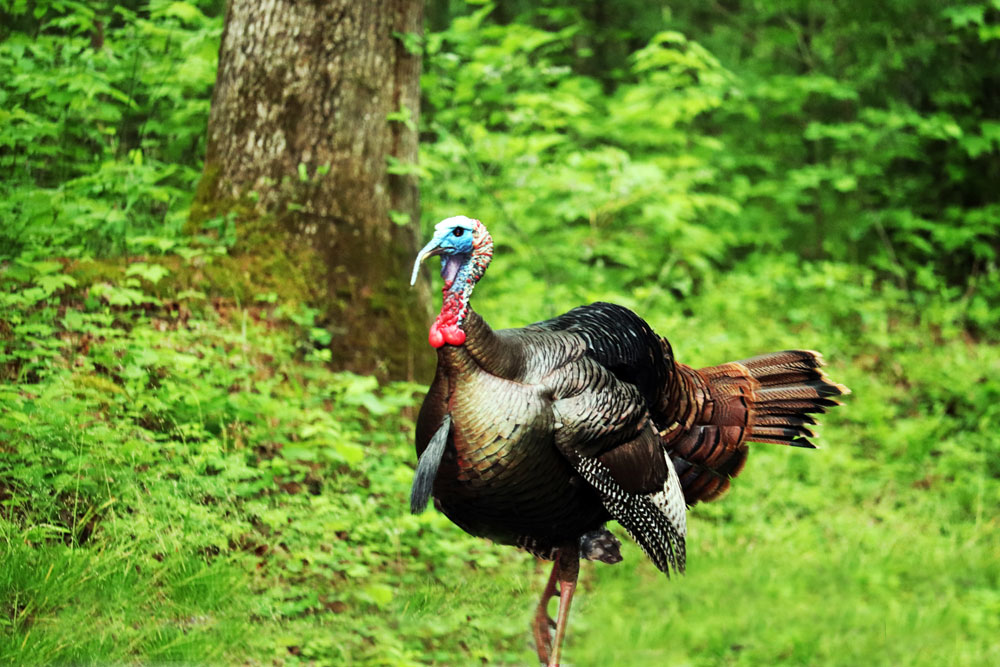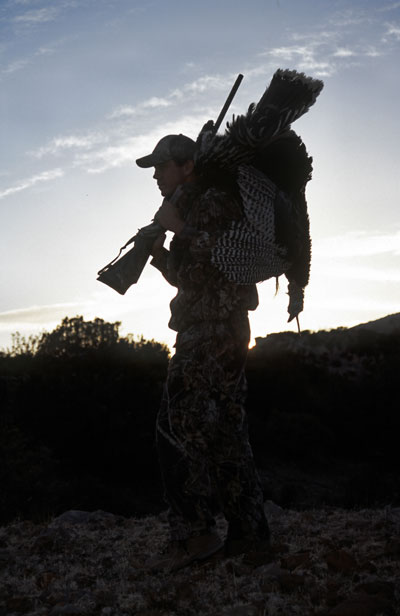provided by John Phillips
Mossy Oak Fishing Team Member Hank Parker is known by many as a tournament bass fisherman because that’s where he built his name and reputation in the early days of the Bassmaster tournament trail. Hank is a true outdoorsman and loves hunting just as much as he loves fishing. He’s an avid turkey hunter. Hank hunts turkeys in North Carolina and South Carolina.

If there’s a turkey gobbling on a ridge above us, and you’re in the bottom, more than likely he’ll be able to see you if you continue on the route where you’re going. To prevent that from happening, as soon as I hit that bottom, I’ll look for a creek I can get in and move closer to him. Next, I’ll walk in a big circle toward him, while making sure he can’t see me. Or, I’ll get on the ridge with him. If you start walking parallel to that turkey, he’ll more than likely see you, if you’re not down in a ditch.
 If you decide to get on the ridge with that turkey, make sure you’re either higher up or on the same level. Calling a turkey downhill is a very difficult task. Now I’m not saying you can’t do it, but you’ve got a better chance of killing that turkey if you can get above him or on that same ridge without him seeing you. On the other hand, if that turkey is screaming every time I make a call and is really excited and enthusiastic about answering me, I know I’ve got a good chance of getting him to come downhill. Still, I’ll attempt to get above him or on the same level that he is.
If you decide to get on the ridge with that turkey, make sure you’re either higher up or on the same level. Calling a turkey downhill is a very difficult task. Now I’m not saying you can’t do it, but you’ve got a better chance of killing that turkey if you can get above him or on that same ridge without him seeing you. On the other hand, if that turkey is screaming every time I make a call and is really excited and enthusiastic about answering me, I know I’ve got a good chance of getting him to come downhill. Still, I’ll attempt to get above him or on the same level that he is.
To find that turkey, I’ll sit down and listen to see if I can hear that turkey gobbling, drumming, strutting or walking. If I can’t hear or see him, I’ll blow a crow call. I usually can get a turkey to gobble at me using that call, if he’s within 150-200 yards from me.
If that turkey gobbles and he’s 200 yards away, I’ll sit tight where I am and not call to him. I know some hunters start calling to a turkey as soon as he gobbles. But I don’t, and here’s why: I think that a turkey knows that if a crow on the ground is calling, there won’t be a hen standing beside it yelping. So, I wait a little while before I give that turkey any hen calls. If I was in a manhole with its lid left open and called to a turkey 200 yards away, he’d come straight to that manhole and look down to see what I was doing. Once you use any call, that turkey knows exactly where you are.
If that turkey answers my crow call and sounds like he’s aggressive, and I have enough cover to move without his seeing me, I’ll move about four trees from that spot, wait about 10 minutes and start yelping to him. If I don’t have enough cover to move, I’ll wait about 10 minutes after I’ve crow called to him before I begin yelping. If I’ve never hunted this turkey before, I’ll call to him with my little glass pot call. If I’ve already called him with a glass call before, I may call him with my mouth call. If I’ve called to him with both of those calls, I’ll then use a box call. I don’t like to call to a gobbler with the same call I’ve used previously. Instead, I’ll yelp to him, then cluck to him, and possibly give him a few purrs on whatever call I’m using.
If the turkey doesn’t come in after I’ve given him that series of calls, what do I do? I’ll assume that that turkey has hens with him. I’ll switch my focus to calling the boss hen to get her mad at me. If I’m successful, she’ll bring the other hens and the gobbler to me to run me off, so her gobbler won’t take me on a date.



























